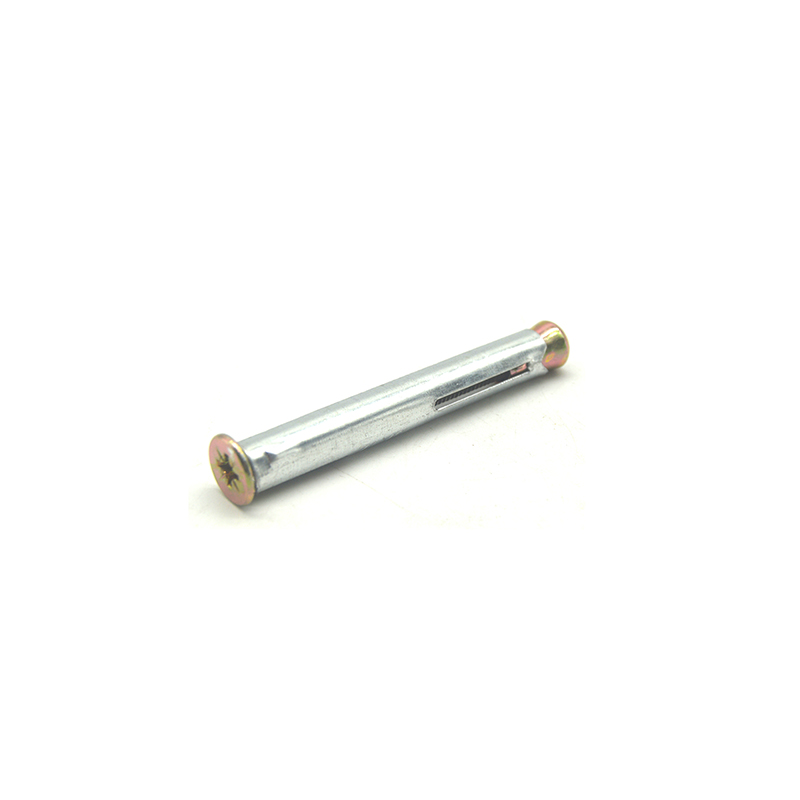- English
- Chinese
- French
- German
- Portuguese
- Spanish
- Russian
- Japanese
- Korean
- Arabic
- Irish
- Greek
- Turkish
- Italian
- Danish
- Romanian
- Indonesian
- Czech
- Afrikaans
- Swedish
- Polish
- Basque
- Catalan
- Esperanto
- Hindi
- Lao
- Albanian
- Amharic
- Armenian
- Azerbaijani
- Belarusian
- Bengali
- Bosnian
- Bulgarian
- Cebuano
- Chichewa
- Corsican
- Croatian
- Dutch
- Estonian
- Filipino
- Finnish
- Frisian
- Galician
- Georgian
- Gujarati
- Haitian
- Hausa
- Hawaiian
- Hebrew
- Hmong
- Hungarian
- Icelandic
- Igbo
- Javanese
- Kannada
- Kazakh
- Khmer
- Kurdish
- Kyrgyz
- Latin
- Latvian
- Lithuanian
- Luxembou..
- Macedonian
- Malagasy
- Malay
- Malayalam
- Maltese
- Maori
- Marathi
- Mongolian
- Burmese
- Nepali
- Norwegian
- Pashto
- Persian
- Punjabi
- Serbian
- Sesotho
- Sinhala
- Slovak
- Slovenian
- Somali
- Samoan
- Scots Gaelic
- Shona
- Sindhi
- Sundanese
- Swahili
- Tajik
- Tamil
- Telugu
- Ukrainian
- Urdu
- Uzbek
- Vietnamese
- Welsh
- Xhosa
- Yiddish
- Yoruba
- Zulu
- Kinyarwanda
- Tatar
- Oriya
- Turkmen
- Uyghur

สกรูเกลียวปล่อยขนาด 2.5 มม
ทำความเข้าใจเกี่ยวกับสกรูเกลียวปล่อยขนาด 2.5 มม
ในโลกของตัวยึด มีส่วนประกอบเพียงไม่กี่ชิ้นที่มีความสำคัญแต่มักถูกมองข้ามไป สกรูเกลียวปล่อยขนาด 2.5 มม. เครื่องมือขนาดเล็กแต่ทรงพลังเหล่านี้มีแอปพลิเคชันที่หลากหลายจนน่าประหลาดใจ และถึงแม้จะมีขนาดใหญ่ แต่ก็ต้องใช้แนวทางที่รอบคอบเพื่อให้แน่ใจว่าจะใช้งานได้สำเร็จ เรามาเจาะลึกข้อมูลเชิงลึกและประสบการณ์ที่อาจช่วยแก้ไขความเข้าใจผิดทั่วไปกัน
ความเข้าใจผิดทั่วไปเกี่ยวกับสกรูเกลียวปล่อย
หนึ่งในความเข้าใจผิดที่พบบ่อยเกี่ยวกับ สกรูเกลียวปล่อย ถือเป็นคุณลักษณะ 'การเจาะตัวเอง' ที่พวกเขาควรจะเป็น หลายคนคิดว่าสกรูเหล่านี้ไม่จำเป็นต้องมีรูนำ ซึ่งไม่แม่นยำทั้งหมด โดยเฉพาะอย่างยิ่งสำหรับวัสดุที่แข็งกว่า ในทางปฏิบัติ การเริ่มต้นด้วยรูนำสามารถป้องกันการแตกร้าวและปรับปรุงเสถียรภาพได้
ในช่วงหลายปีที่ฉันทำงานกับ Handan Shengtong Fastener Manufacturing Co., LTD ซึ่งเป็นชื่อที่มีชื่อเสียงในมณฑลเหอเป่ย เราสังเกตเห็นปัญหาบ่อยครั้งเมื่อลูกค้าข้ามขั้นตอนการขุดเจาะ ทีมงานของเรามักจะแนะนำให้ตรวจสอบวัสดุก่อน วัสดุพิมพ์ที่นิ่มกว่าอาจทำให้สามารถแทรกได้โดยตรง ไม่เหมือนวัสดุที่แข็งกว่า
นอกจากนี้ การสันนิษฐานว่าสกรูเกลียวปล่อยทั้งหมดสามารถใช้แทนกันได้อาจทำให้เกิดการใช้งานที่ไม่ตรงกันได้ การออกแบบเกลียวและวัสดุของสกรูควรสอดคล้องกับการใช้งานเฉพาะ ซึ่งเป็นสิ่งที่เราให้ความสำคัญกับลูกค้าของเราผ่านทางเว็บไซต์ของเรา ตัวยึด Shengtong.
วิธีที่ถูกต้องในการใช้สกรู 2.5 มม
เมื่อใช้ สกรูเกลียวปล่อยขนาด 2.5 มมความแม่นยำเป็นสิ่งสำคัญ เริ่มต้นด้วยการจัดแนววัสดุให้ถูกต้อง การวางแนวที่ไม่ตรงเล็กน้อยอาจส่งผลให้สกรูบิดเบี้ยวซึ่งไม่เพียงแต่ดูไม่เป็นมืออาชีพ แต่ยังทำให้ข้อต่ออ่อนแอลงอีกด้วย จิ๊กธรรมดาสามารถสร้างสิ่งมหัศจรรย์ได้ที่นี่
เคล็ดลับอีกประการหนึ่งคือการใช้ไขควงที่เข้ากันกับหัวสกรูได้อย่างลงตัว แม้ว่าสิ่งนี้อาจฟังดูธรรมดา แต่ความพอดีนั้นส่งผลกระทบทั้งความง่ายในการติดตั้งและอาจเกิดความเสียหายโดยไม่ได้ตั้งใจ เครื่องมือที่ไม่ตรงกันมักจะนำไปสู่การปอก ซึ่งทำให้เสียหาย สกรูด้ามจับ
ทิปด้านใน: ระหว่างการติดตั้ง ให้ใช้แรงกดสม่ำเสมอและให้สกรูตั้งฉากกับวัสดุ โดยค่อยๆ เพิ่มแรงบิด วิธีนี้จะช่วยลดโอกาสที่จะเกิดการแตกหัก ซึ่งเป็นข้อผิดพลาดมือใหม่ทั่วไปที่มักพบเห็นได้กับผู้ใช้ครั้งแรก
สิ่งที่ควรพิจารณาก่อนเลือกสกรู
ก่อนที่จะตัดสินใจเลือกขนาดสกรู ให้พิจารณาความหนาของวัสดุก่อน ความยาวของสกรู 2.5 มม. แม้จะเล็ก แต่ก็ควรเจาะผ่านวัสดุฐานเล็กน้อย เพื่อให้ยึดเกาะได้ดีที่สุด การเจาะทะลุมากเกินไปอาจทำให้ความสมบูรณ์ของโครงสร้างลดลง ซึ่งเป็นความสมดุลที่เหมาะสมยิ่งที่เราได้ฝึกฝนที่ Shengtong Fastener
ปัจจัยด้านสิ่งแวดล้อม เช่น การสัมผัสกับความชื้นก็มีความสำคัญเช่นกัน การใช้สกรูที่ออกแบบพร้อมการเคลือบที่เหมาะสมสามารถป้องกันสนิมและการกัดกร่อนทำให้มีอายุการใช้งานยาวนานขึ้น เราพบว่าลูกค้ากลับมาเลือกผลิตภัณฑ์ช้าเกินไปเมื่อองค์ประกอบเหล่านี้ถูกมองข้ามในตอนแรก
นอกจากนี้ควรระมัดระวังในการซื้อจากแหล่งที่เชื่อถือได้ เรียนรู้จากผู้นำในอุตสาหกรรมเช่น Handan Shengtong Fastener Manufacturing Co., LTD—ผลิตภัณฑ์ของเราได้รับความไว้วางใจในด้านความทนทานและการปฏิบัติตามมาตรฐานสากล
จัดการกับความท้าทายในการสมัคร
ช่างเทคนิคทุกคนต้องเผชิญกับอาการสะอึกเป็นครั้งคราว ปัญหาที่พบบ่อยคือการเลื่อนหลุดของสกรู มักเกิดจากการยึดเกาะที่ไม่เพียงพอ โดยทั่วไปแล้วจะเชื่อมโยงกลับไปยังรูนำร่องที่ไม่เหมาะสมหรือความยาวของสกรูไม่ถูกต้อง
ในกรณีที่ไม่มีเครื่องมือควบคุมแรงบิด ให้สัมผัสแรงบิดด้วยตนเอง ไม่ใช่เรื่องเข้าใจผิด แต่ผู้ปฏิบัติงานที่มีประสบการณ์จะพัฒนา 'ความรู้สึก' เมื่อเวลาผ่านไป เครื่องมือที่มีคุณภาพสามารถเสริมทักษะนี้และเพิ่มประสิทธิภาพได้
นอกจากนี้ ควรรักษาการตรวจสอบคุณภาพของการทำเกลียวไว้ เป็นเรื่องง่ายที่จะมองข้ามแต่สำคัญ การร้อยด้ายที่ไม่ดีอาจทำให้เกิดการนั่งที่ไม่น่าพอใจและทำให้เกิดความเครียดได้ มีส่วนร่วมกับผู้ผลิตเช่นเราเพื่อการประกันคุณภาพ
สรุป: การตัดสินใจเลือกที่ถูกต้อง
ทำความเข้าใจและนำรายละเอียดเหล่านี้ไปใช้ในการใช้งาน สกรูเกลียวปล่อยขนาด 2.5 มม สามารถปรับปรุงผลลัพธ์ของโครงการของคุณได้อย่างมาก โปรดจำไว้ว่า ไม่ใช่แค่ขนาดของสกรูเท่านั้น แต่ยังรวมถึงการใช้งานที่แม่นยำซึ่งกำหนดความสำเร็จด้วย
สำหรับคำแนะนำที่ครอบคลุมทีมงานของเราที่ ตัวยึด Shengtong พร้อมที่จะช่วยเหลือ เพื่อให้มั่นใจว่าลูกค้ามีข้อมูลในการตัดสินใจที่เหมาะสมกับความต้องการเฉพาะของพวกเขา ตัวยึดอาจมีขนาดเล็ก แต่ต้องการการดูแลอย่างเต็มที่จากคุณ
ท้ายที่สุดแล้ว ประสบการณ์สอนเราถึงความจริงประการหนึ่ง นั่นคือ ใช้เวลาทำความเข้าใจทั้งเครื่องมือและบริบทของมัน เข้าร่วมกับผู้เชี่ยวชาญที่พึงพอใจจำนวนนับไม่ถ้วนที่ไว้วางใจเราในเรื่องความต้องการตัวยึด
ที่เกี่ยวข้อง ผลิตภัณฑ์
สินค้าที่เกี่ยวข้อง





















